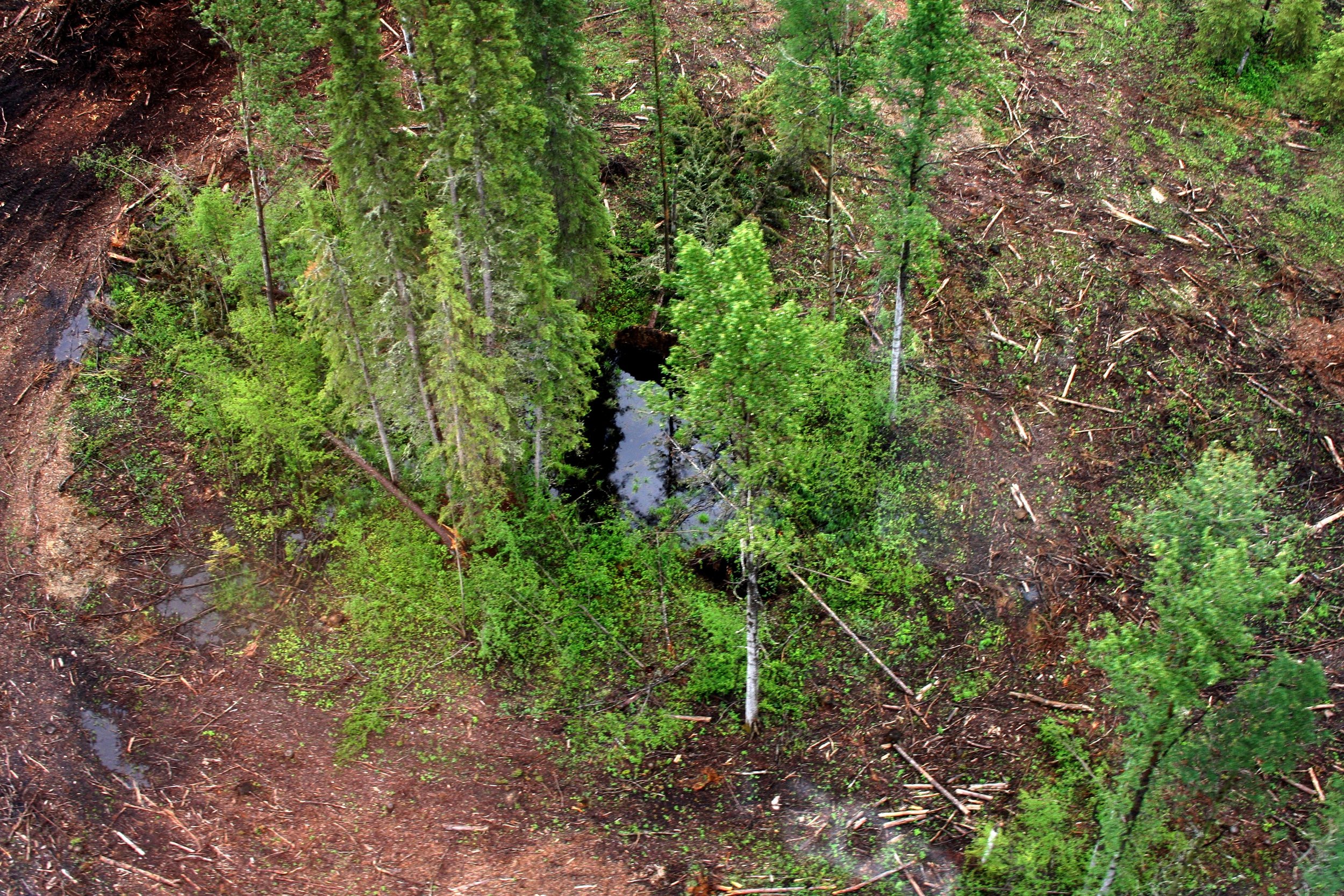
Carbon Dynamics
Key Findings
Understanding how factors such as soil type, forest cover and disturbances like harvesting and wildfire can influence whether a forest functions as a carbon sink or source is key for sustainable forest management. Researchers at EMEND have examined how harvesting intensity and forest cover type interact to impact changes in carbon pools over time. Researchers also explored the correlation between site wetness and soil carbon stocks.
Key findings related to carbon at EMEND include:
Deciduous forests store less carbon compared to mixed or coniferous stands, impacting overall carbon dynamics within forest ecosystems.
All harvested areas are initially “net carbon sources” for up to 3 years, with higher losses observed at lower retention levels due to tree removal and increased decay.
Deciduous forests become carbon sinks within 3 to 7 years post-harvest, while mixed and conifer stands require 12 to 18 years to become sinks due to differences in regeneration.
Leaving retention (10% or more in deciduous and coniferous, 20% or more in mixed forests) yields important long-term carbon benefits by preserving live trees.
Forest cover type influences soil carbon dynamics, with deciduous and mixed stands maintaining or increasing soil carbon, while coniferous stands experience soil carbon loss.
Targeting retention strategies based on site moisture levels can optimize carbon conservation. Managers can harvest wetter areas in deciduous stands to conserve more carbon and drier areas in coniferous stands to conserve carbon in wetter sites.
EMEND Carbon Dynamics Briefing Note
A series of briefing notes were developed to synthesize EMEND research over the past 17 years, covering various topics including biodiversity, soil management, carbon dynamics, and silvicultural strategies. These briefing notes provide a comprehensive overview of key findings for each topic and include management implications for forest managers to inform decision-making and sustainable forest management practices.
Additionally, several EMEND infographics and Sustainable Forest Management Network research notes have been produced throughout the years. Find summaries of the briefing notes, direct links to each note, and links to related EMEND Insights, infographics and research notes on each topic page.
For a complete list of references for the EMEND Carbon briefing note, click here.
Learn More
Click on the links below to learn more about carbon findings at EMEND.
EMEND Insights #22: Adapting harvest practices to climate change: how wet areas mapping can help estimate soil carbon stocks.




